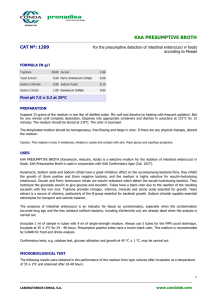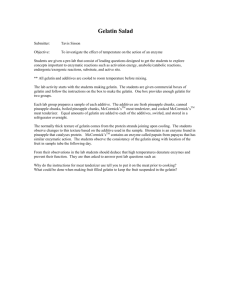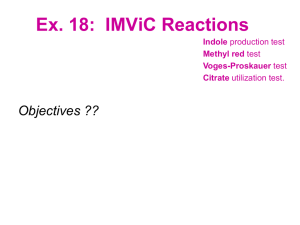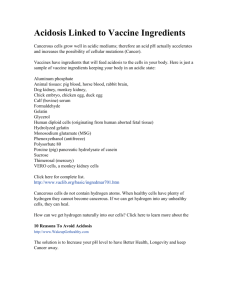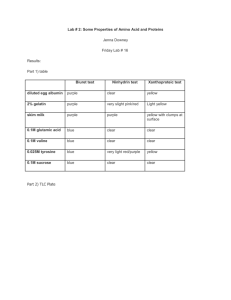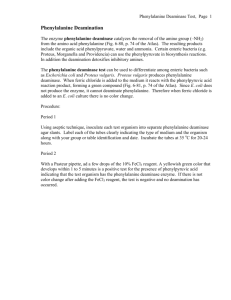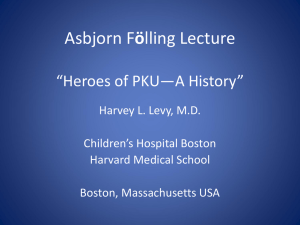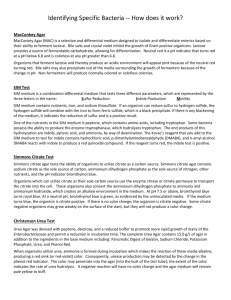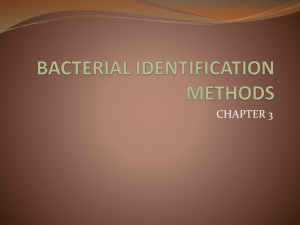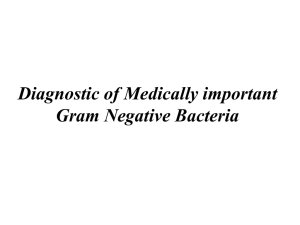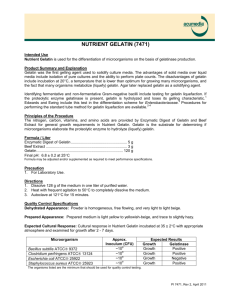Microscopy
advertisement
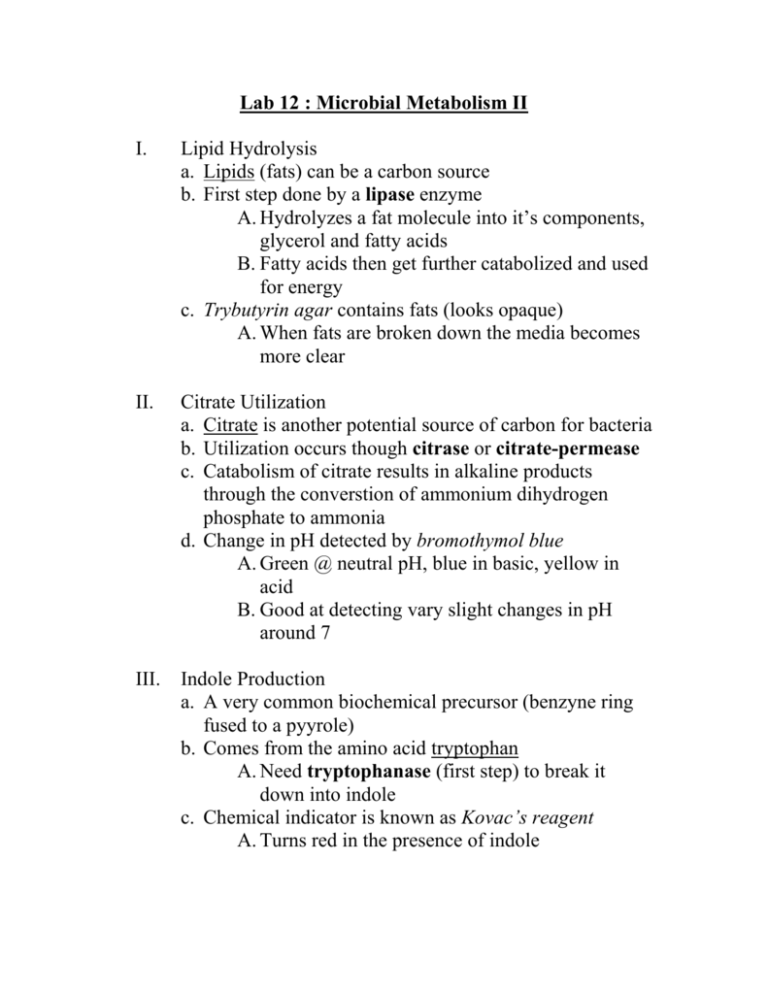
Lab 12 : Microbial Metabolism II I. Lipid Hydrolysis a. Lipids (fats) can be a carbon source b. First step done by a lipase enzyme A. Hydrolyzes a fat molecule into it’s components, glycerol and fatty acids B. Fatty acids then get further catabolized and used for energy c. Trybutyrin agar contains fats (looks opaque) A. When fats are broken down the media becomes more clear II. Citrate Utilization a. Citrate is another potential source of carbon for bacteria b. Utilization occurs though citrase or citrate-permease c. Catabolism of citrate results in alkaline products through the converstion of ammonium dihydrogen phosphate to ammonia d. Change in pH detected by bromothymol blue A. Green @ neutral pH, blue in basic, yellow in acid B. Good at detecting vary slight changes in pH around 7 III. Indole Production a. A very common biochemical precursor (benzyne ring fused to a pyyrole) b. Comes from the amino acid tryptophan A. Need tryptophanase (first step) to break it down into indole c. Chemical indicator is known as Kovac’s reagent A. Turns red in the presence of indole IV. Urea Hydrolysis a. Breakdown of urea into two molecules of ammonia is catalyzed by urease enzyme b. pH indicator, Phenol Red, is used to detect basic ammonia A. Basic = red/pink; Acidic = yellow V. Gelatin Liqufaction a. Gelatin can be a source of protein for bacteria but it’s molecules are too large to be taken up by the cells A. So bacteria can produce gelatinases to break down the gelatin into more accessible parts B. Mercuric chloride causes gelatin to precipitate … but if the gelatin is already broken down there’s nothing to precipitate C. Zones of clearing show gelatinase activity D. MERCURIC CHLORIDE IS TOXIC – BE CAREFUL VI. Lysine Decarboxylase a. Decarboxylation is removal of a carboxylic acid functional group b. Lysine decarboxylase removes the –COOH from lysine forming a basic product A. But it only does this under acidic conditions 1. So we induce fermentation by removing oxygen thus leading to acid production B. But lysine decarboxylation results in alkaline products so … C. pH indicator used is bromocresol purple so pH goes from: 1. Neutral = Purple to 2. Acidic = Yellow then back to purple VII. Phenylalanine Deamination a. Deamination is the removal of an amine group forming an acidic compound A. In this case phenylalanine deaminase turns Phenylalanine into phenylpyruvic acid b. PPA is detected by Ferric Cloride which turns green in the presence of phenylpyruvic acid indicating the presence of phenylalanine deaminase VIII. Bile Esculin a. Two tests in one : 1) Can is grow in a high bile concentration and 2) Does it utilize esculin b. Bile is an intestinal secretion from the liver (stored in the gall bladder) used as a selective agent c. Esculin is a glycoside that can be hydrolyzed to release glucose and esculetin d. Esculetin reacts with ferric citrate in media to precipitate into a brown / black compound For quiz know all SUBSTRATES, ENZYMES, AND INDICATORS
